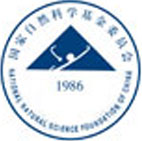 |
PlantRegMap/PlantTFDB v5.0
Plant Transcription
Factor Database
|
| Home TFext BLAST Prediction Download Help About Links PlantRegMap |
| Species | TF ID | Description |
|---|---|---|
| AT1G49190.1 | response regulator 19 | |
| AT1G49190.2 | response regulator 19 | |
| AT1G67710.1 | response regulator 11 | |
| AT1G68210.1 | pseudo-response regulator 6 | |
| AT2G01760.1 | response regulator 14 | |
| AT2G25180.1 | response regulator 12 | |
| AT2G27070.1 | response regulator 13 | |
| AT3G16857.1 | response regulator 1 | |
| AT3G16857.2 | response regulator 1 | |
| AT3G62670.1 | response regulator 20 | |
| AT4G16110.1 | response regulator 2 | |
| AT4G18020.1 | ARR-B family protein | |
| AT4G18020.2 | ARR-B family protein | |
| AT4G18020.3 | ARR-B family protein | |
| AT4G18020.4 | ARR-B family protein | |
| AT4G18020.5 | ARR-B family protein | |
| AT4G18020.6 | ARR-B family protein | |
| AT4G31920.1 | response regulator 10 | |
| AT5G07210.1 | response regulator 21 | |
| AT5G49240.1 | pseudo-response regulator 4 | |
| AT5G58080.1 | response regulator 18 |
The Arabidopsis genome codes for 22 response regulators (ARRs), 12 of which contain a Myb-like DNA binding domain called ARRM (type B). The remainder (type A) possess no apparent functional unit other than a signal receiver domain containing two aspartate and one lysine residues (DDK) at invariant positions, and their genes are transcriptionally induced by cytokinins without de novo protein synthesis. The type B members, ARR1 and ARR2, bind DNA in a sequence-specific manner and work as transcriptional activators.
Here we present evidence that ARR1 mediates a cytokinin signal, probably through its NH2-terminal signal receiver domain, and transactivates ARR6, which is immediately responsive to cytokinins. A paralogous response regulator, ARR2, shows almost identical characteristics to ARR1, suggesting a functional overlap. Residual cytokinin responses observed with the arr1-1 mutant may have been provided by ARR2. In addition to ARR6, other type A member genes, including ARR4, ARR5, ARR7, ARR8, and ARR9, were also activated by DEX at various levels in 35S::ARR1DDK::GR plants, suggesting that all the immediate cytokinin-responsive genes belonging to this group are directly activated by ARR1. Also, other cytokinin-responsive genes whose promoter regions contain the ARR1 recognition sequences are possibly transactivated by ARR1. A screening for ARR1 target genes using transgenic 35S::ARR1-DDK::GR plants will shed light on the whole view of the early cytokinin signal transduction pathway. We conclude that ARR1 is a principal transcription factor-type response regulator that is involved in an early step of cytokinin signal transduction, possibly as a partner of the sensor histidine kinase CRE1.
Hiroe Sakai, Takashi Honma, Takashi Aoyama, Shusei Sato, Tomohiko Kato, Satoshi Tabata, Atsuhiro Oka
ARR1, a Transcription Factor for Genes Immediately Responsive to Cytokinins
Science, Vol 294, Issue 5546, 1519-1521, 16 November 2001



